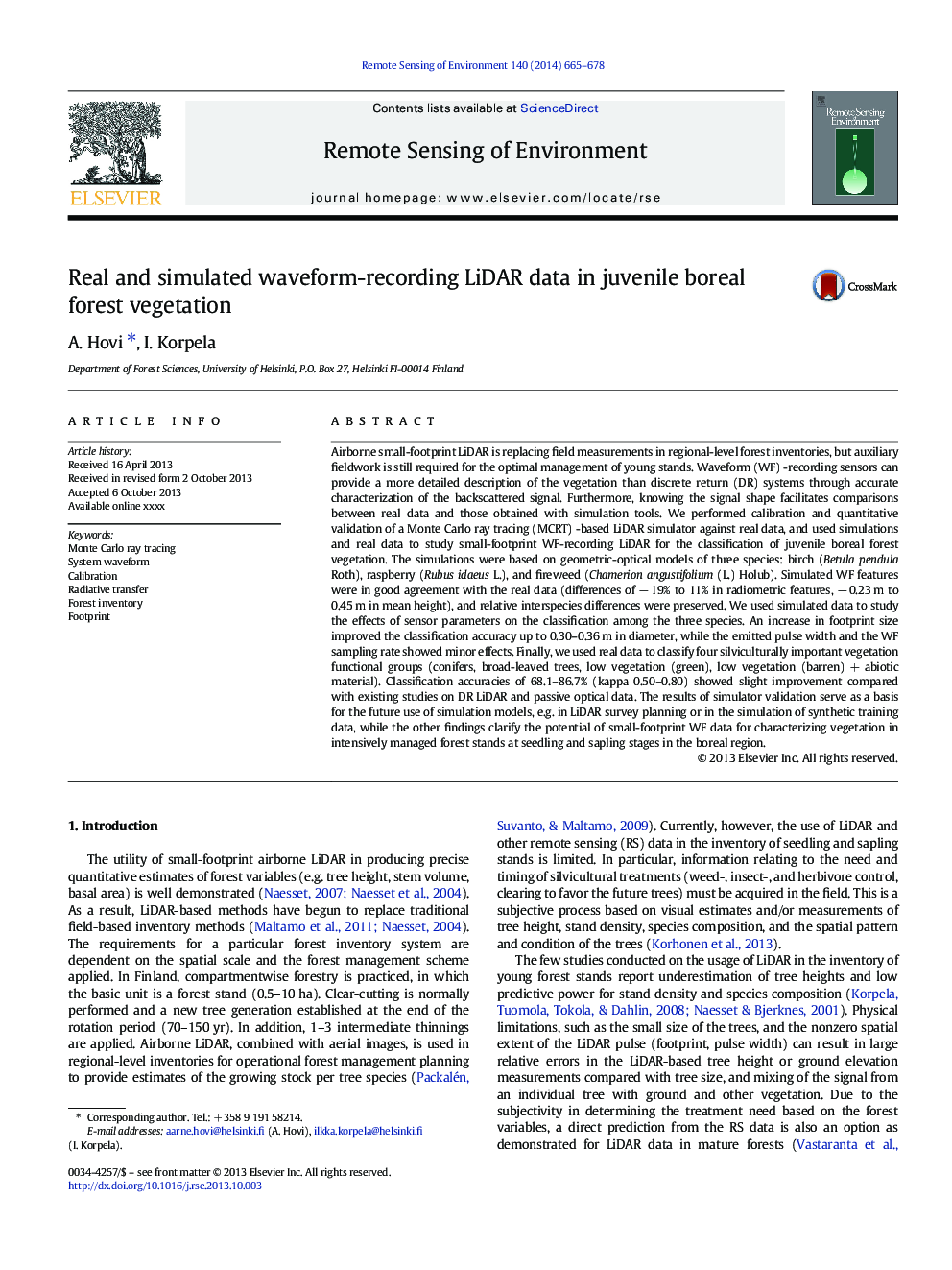| کد مقاله | کد نشریه | سال انتشار | مقاله انگلیسی | نسخه تمام متن |
|---|---|---|---|---|
| 6347082 | 1621260 | 2014 | 14 صفحه PDF | دانلود رایگان |
عنوان انگلیسی مقاله ISI
Real and simulated waveform-recording LiDAR data in juvenile boreal forest vegetation
دانلود مقاله + سفارش ترجمه
دانلود مقاله ISI انگلیسی
رایگان برای ایرانیان
کلمات کلیدی
موضوعات مرتبط
مهندسی و علوم پایه
علوم زمین و سیارات
کامپیوتر در علوم زمین
پیش نمایش صفحه اول مقاله

چکیده انگلیسی
Airborne small-footprint LiDAR is replacing field measurements in regional-level forest inventories, but auxiliary fieldwork is still required for the optimal management of young stands. Waveform (WF) -recording sensors can provide a more detailed description of the vegetation than discrete return (DR) systems through accurate characterization of the backscattered signal. Furthermore, knowing the signal shape facilitates comparisons between real data and those obtained with simulation tools. We performed calibration and quantitative validation of a Monte Carlo ray tracing (MCRT) -based LiDAR simulator against real data, and used simulations and real data to study small-footprint WF-recording LiDAR for the classification of juvenile boreal forest vegetation. The simulations were based on geometric-optical models of three species: birch (Betula pendula Roth), raspberry (Rubus idaeus L.), and fireweed (Chamerion angustifolium (L.) Holub). Simulated WF features were in good agreement with the real data (differences of â 19% to 11% in radiometric features, â 0.23 m to 0.45 m in mean height), and relative interspecies differences were preserved. We used simulated data to study the effects of sensor parameters on the classification among the three species. An increase in footprint size improved the classification accuracy up to 0.30-0.36 m in diameter, while the emitted pulse width and the WF sampling rate showed minor effects. Finally, we used real data to classify four silviculturally important vegetation functional groups (conifers, broad-leaved trees, low vegetation (green), low vegetation (barren) + abiotic material). Classification accuracies of 68.1-86.7% (kappa 0.50-0.80) showed slight improvement compared with existing studies on DR LiDAR and passive optical data. The results of simulator validation serve as a basis for the future use of simulation models, e.g. in LiDAR survey planning or in the simulation of synthetic training data, while the other findings clarify the potential of small-footprint WF data for characterizing vegetation in intensively managed forest stands at seedling and sapling stages in the boreal region.
ناشر
Database: Elsevier - ScienceDirect (ساینس دایرکت)
Journal: Remote Sensing of Environment - Volume 140, January 2014, Pages 665-678
Journal: Remote Sensing of Environment - Volume 140, January 2014, Pages 665-678
نویسندگان
A. Hovi, I. Korpela,